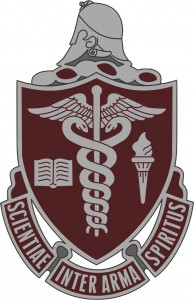 The Walter Reed Hospital, or The Walter Reed Army Medical Center, until recently, was the army’s main hospital base for soldiers and military personnel. Most treated at Walter Reed were soldiers who had been injured in war and were in need of serious medical attention. Walter Reed Hospital was a place soldiers could be taken out directly from battle, and brought to receive the proper, often life deciding, treatment they needed.
The Walter Reed Hospital, or The Walter Reed Army Medical Center, until recently, was the army’s main hospital base for soldiers and military personnel. Most treated at Walter Reed were soldiers who had been injured in war and were in need of serious medical attention. Walter Reed Hospital was a place soldiers could be taken out directly from battle, and brought to receive the proper, often life deciding, treatment they needed.
History of Walter Reed Hospital
 The Walter Reed Hospital served as the main place in the United States to treat wounded soldiers from 1909 to only a few years ago, in 2011. Located in Washington D. C., The Walter Reed Hospital served over 150 thousand soldiers and their families for over one hundred years. The hospital served both active duty soldiers, as well as retired veterans, and both category’s families.
The Walter Reed Hospital served as the main place in the United States to treat wounded soldiers from 1909 to only a few years ago, in 2011. Located in Washington D. C., The Walter Reed Hospital served over 150 thousand soldiers and their families for over one hundred years. The hospital served both active duty soldiers, as well as retired veterans, and both category’s families.
Walter Reed Hospital was named after an army physician, Walter Reed who lived from 1851 to 1902, seven years before its erection. Walter Reed was acclaimed to have led the medical team who discovered that yellow fever, a disease that plagued soldiers abroad and different localities around the world, was actually spread by mosquitos and not, as previously imagined, by direct contact.
Wikipedia Discrepency
As Wikipedia would have it, the Walter Reed Hospital boasted 5,500 (five thousand, five hundred) rooms and was able to take care of 80 patients per room (eighty being number of beds they were declared to have per room). Though these numbers must need to be reviewed, that would have it that Walter Reed Hospital had a capacity for half a million people, which is actually 5/6 of the current population of Washington D.C.
Regardless of this information being out online, the Walter Reed Hospital was still huge, and covered 28 acres of space. More accurate reports show Walter Reed to serve more than 150,ooo patients, and to admit about 16,000 patients per year. These numbers are all from military personnel, active, retired, and from all branches of the United States Military.
Dr. Mark Prysi and Walter Reed Hospital
Around the time Vietnam was at its thickest, Dr. Mark Prysi was just a young boy. Nevertheless his father was a military man, and when Dr. Prysi sustained an injury while using farm equipment, he was taken in at Walter Reed to receive his treatment
Dr. Mark Prysi‘s experience in Walter Reed, seeing the critically wounded soldiers occupying the hospital beds next to him, inspired him to understand the sacrifice made by military servicemen, and to join into the field of medicine, and become a doctor himself.